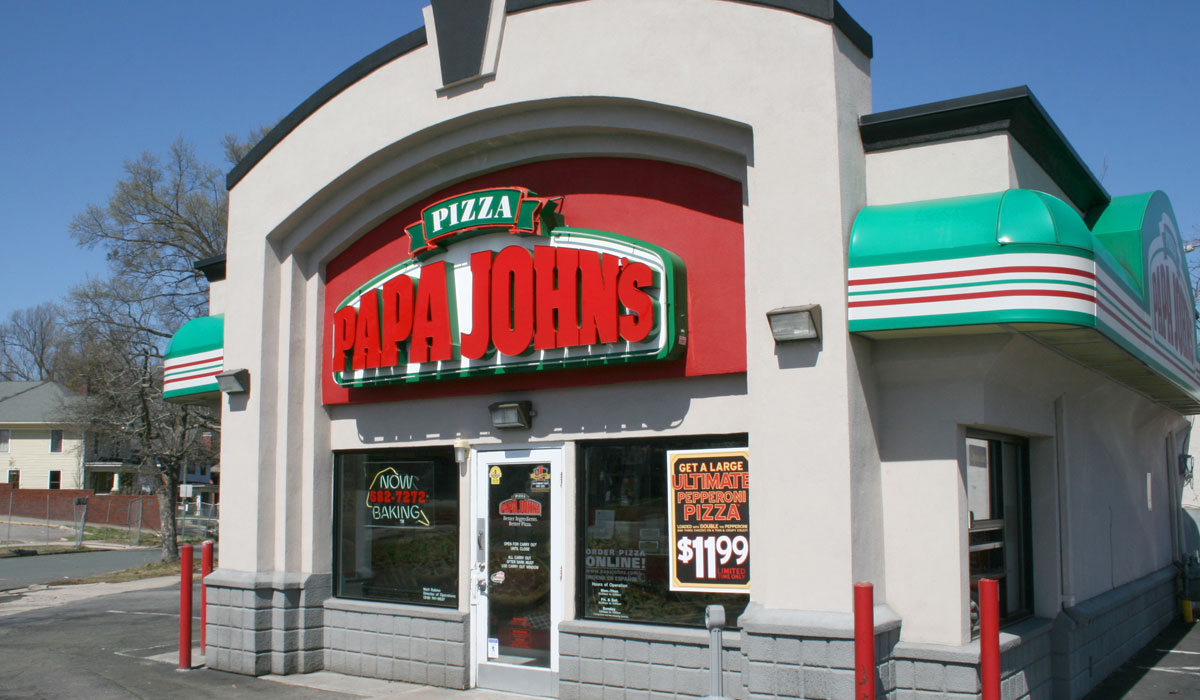A new rewards program is the latest act in Papa John’s transformation plan. The pizza chain unveiled an updated “Papa Rewards” program Monday as it continues to combat downward sales that nearly hit double-digits in the third quarter.
The fresh platform rewards points five times faster than before, the company said. Points earned turn into the “gold standard of pizza rewards currency: Papa Dough.” This “crusto-currency,” as Papa John’s calls it, can be redeemed toward anything on the menu—pizzas, sides, desserts, and more (excluding alcohol). This includes limited-time offers and promotions.
Changes to the program are:
- Guests now receive one point for every dollar spent (previously 1 point for every $5 spent).
- 75 points equals $10 Papa Dough
- No limitations for the amount of points that can be earned per transaction
- Now able to earn on any order—on web, apps, by phone or in store
Additionally, current Papa Rewards members’ accounts automatically transitioned to the new platform, the company said. Points from the previous program were also multiplied by five during the transition to align with the value of the new program structure.
To celebrate the launch, new and current members receive a free 10-inch Cheesesticks with any $12 purchase through January 27.
Lastly, Papa John’s, in an effort “to further emphasize the new Papa Rewards being the gold standard in loyalty” is giving members the chance to win a gold pepperoncini. Valued at more than $10,000, there’s only one “ultimate badge of Papa John’s iconic fandom,” and can be won by making a minimum $5 purchase between December 17 and January 6.
Papa John’s North America same-store sales dropped 9.8 percent, year-over-year, in the third-quarter period that ended September 30. This was actually a better result than many analysts expected after Papa John’s comps plummeted 10.5 percent in July following a string of negative media incidents related to founder John Schnatter’s racial-slur story, which surfaced July 11 and resulted in his departure as chairman. The 5,000-plus-unit brand also offered an improved outlook of negative 6.5–8.5 percent for the year—up from the previous guidance of negative 7–10 percent. In the third quarter, Papa John’s reported quarterly earnings of 20 cents per share compared to 60 cents a year ago. Revenues came in at $364.01 million versus the year-ago figure of $431.71 million.
Papa John’s has made progress and shifted its marketing direction in recent months. In September, the company launched its “Voices” campaign. The ad direction was intended to spotlight the faces and stories behind the chain. A stark departure from the founder-led marketing that dominated Papa John’s spend for so long.
Chief executive Steve Ritchie said in the chain’s Q3 call that YouGov BrandIndex data showed consumer sentiment shift from largely negative to neutral or positive after the launch.
Ritchie and Papa John’s executives have presented what they view as a correlation between sliding sales and Schnatter’s controversial comments. The founder and former CEO railed against the NFL’s handling of anthem protests last November.
Results would show a deceleration in Papa John’s performance previous to the outburst, but in a far more muted fashion. In fiscal 2017, North America same-store sales gained 1.4 percent in Q2, 1 percent in Q3, and then declined 3.9 percent in Q4. Then the cliff drop:
- Q3: –9.8 percent
- Q2: –6.1 percent
- Q1: –5.3 percent
“The predominant amount of the issues from a comp standpoint is certainly related to consumer sentiment issues related to the two trigger events, one from, of course, November [NFL comments] from last year and then, of course, earlier this year in July [racial slur],” Ritchie said.
He added that Q3 was the start of Papa John’s journey to become a “revitalized modern brand.” The Rewards program is the latest step.
“We’re transitioning to operate like a brand management organization, utilizing customer segmentation to deliver a deeper understanding of our customers and their needs and to innovate around product, message and experience across consumer touch points,” Ritchie said.












